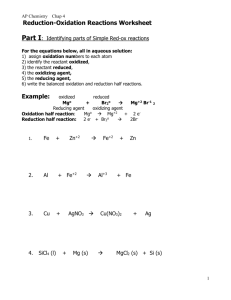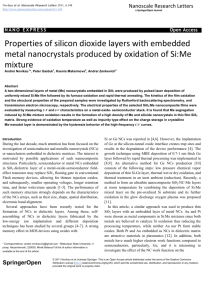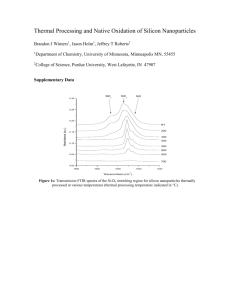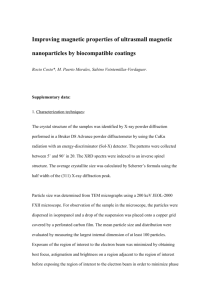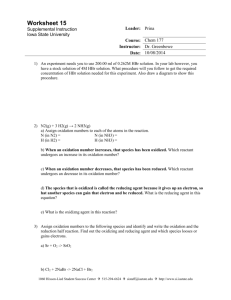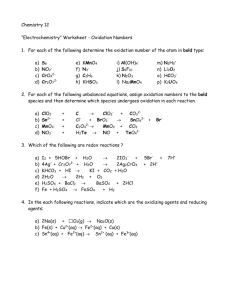Template for Electronic Submission to ACS Journals
advertisement
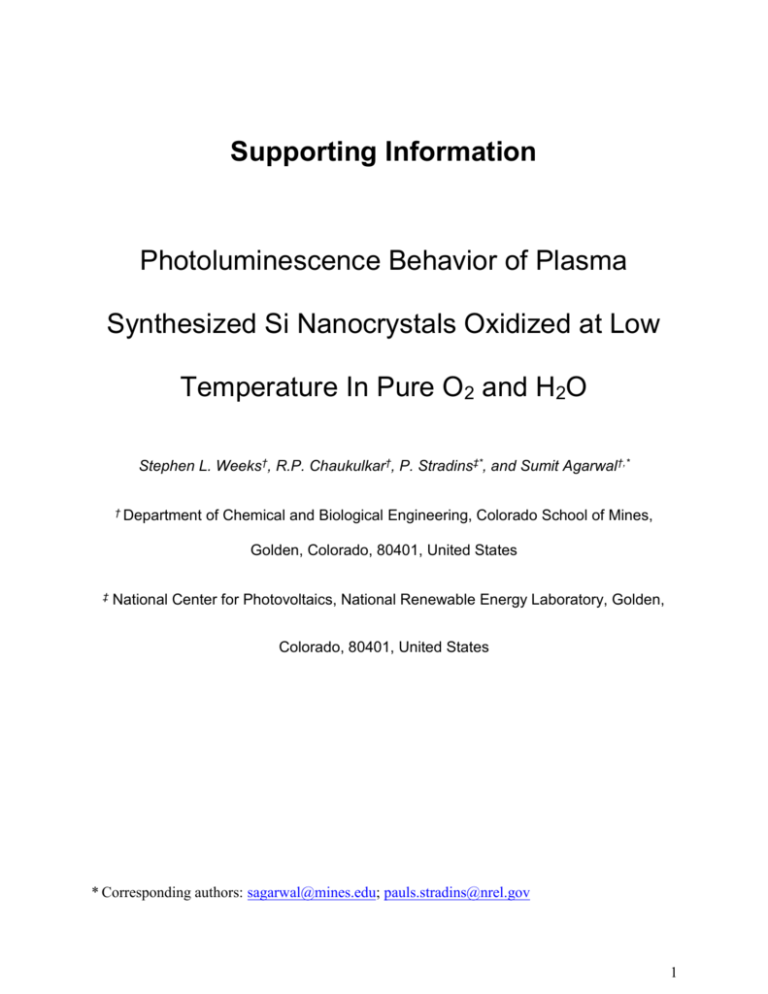
Supporting Information Photoluminescence Behavior of Plasma Synthesized Si Nanocrystals Oxidized at Low Temperature In Pure O2 and H2O Stephen L. Weeks†, R.P. Chaukulkar†, P. Stradins‡*, and Sumit Agarwal†,* † Department of Chemical and Biological Engineering, Colorado School of Mines, Golden, Colorado, 80401, United States ‡ National Center for Photovoltaics, National Renewable Energy Laboratory, Golden, Colorado, 80401, United States * Corresponding authors: sagarwal@mines.edu; pauls.stradins@nrel.gov 1 Starting surface for oxidation Oxidation of H terminated Si nanocrystals was completed separately in O2 or H2O vapor and the evolution of the vibrational modes during oxidation with each species was monitored with in-situ ATR-FTIR spectroscopy. The starting surfaces of each experiment are similar as evidenced by the absorbance change in the SiHx(x=1,2,3) stretching region observed in the freshly deposited Si NCs shown in the inset of figure S1. From the similarity in starting surface, it was concluded that differences observed in surface species generated and the evolution of the Si NC photoluminescence upon oxidation were due to the different oxidants (O2 or H2O vapor) used to oxidize the NC. SiHx(x=1,2,3) .02 stretching Absorbance Change Absorbance Change .02 SiHx(x=2,3) bending 2000 2050 2100 2150 -1 2200 Wavenumber cm 1000 1500 2000 2500 3000 3500 4000 -1 Wavenumber (cm ) Figure S1. Infrared absorbance spectrum for the as-synthesized H-terminated Si NCs prior to oxidation in O2 (main figure), comparison of the SiHx(x=1,2,3) stretching absorbance for Si NCs before oxidation in H2O (red) and O2 (black) is shown in the inset. 2

